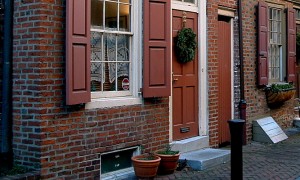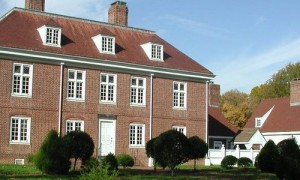Building a custom home gives you the opportunity to choose materials, colors, and styles. It’s important to design a unique home that does not appear out of place in your selected neighborhood, but Philadelphia neighborhoods give you plenty of styles to choose from. Variations of the traditional colonial home are always popular, but the diversity of architecture here allows for a wide range of other home designs. Additionally, when you design your own home from scratch, you gain the advantages of new technology, which increases energy efficiency and makes a home easier to maintain.
Exterior Considerations
One building material that has become popular in the Northeast is James Hardie-brand board siding. Hardie board is fiber cement siding made of sand, wood fibers, and cement. Hardie board can be crafted to resemble wood or vinyl and is more durable than other plank siding. Fiber cement siding has long been used in hurricane zones and other harsh climates, and recently it has become more popular throughout the country.
Because Hardie board is heavier than other types of siding material, and thus more costly to install, you’ll derive the longest benefit by installing it on a new home. Maintenance-wise, according to Homeadvisor.com, Hardie board material lasts up to 50 years, but requires repainting approximately every 15 years.
Interior Design Trends
In the Philadelphia area, after years of cherry cabinets and granite countertops, kitchen trends have shifted towards light or white cabinets and vintage styling. New countertop materials such as quartz or butcher block have gained popularity and now compete with granite. According to a recent AIArchitect article, open layouts are still popular, and after a period of declining home sizes, new homes are increasing living space again.
Outdoor Living and Landscaping
Outdoor living has also increased in popularity, so leave room in your budget for a deck or porch. Sunrooms or screened porches work better than decks or patios for year-round use in the Philadelphia area. Before landscaping, make sure the land has been graded properly for drainage purposes. Also, you may want to leave mature trees to provide shade. Consult an expert about removing any older trees growing close to your home that could cause damage if they fall.
Green Living Is Part of Every New Home
One advantage of being able to design your own home is that almost every new feature will be more energy-efficient than such features are in older homes. Eco-friendly flooring options such as cork, bamboo, marmoleum, or reclaimed wood can be installed. Energy Star-rated appliances cut utility bills by significant amounts. LED lighting saves electricity and lasts longer than traditional incandescent bulbs.
When considering green options, builders and contractors recognize that an up-front investment pays back homeowners in energy cost savings over the lifetime of the home. If you’re not sure which eco-friendly features make the most financial sense, ask your home design team to provide you with additional information. You can also check the city of Philadelphia’s website to find more information about installing solar panels and locating appropriate contractors to do so.
Home Automation
Lastly, automation is another aspect of home design that can be catered to fit your personal specifications. Simplification of automated procedures allows even the least technologically astute individual to take control of a home’s inner workings. Heating, cooling, and home security systems are controlled via a smart device, as are appliances and light timers. Media systems can provide cinema quality on large-screen televisions throughout the home. Overall, recent advances in technology and investments in eco-friendly products have not only changed the visual appearance of homes, but have greatly increased efficiency.
[cf]skyword_tracking_tag[/cf]






